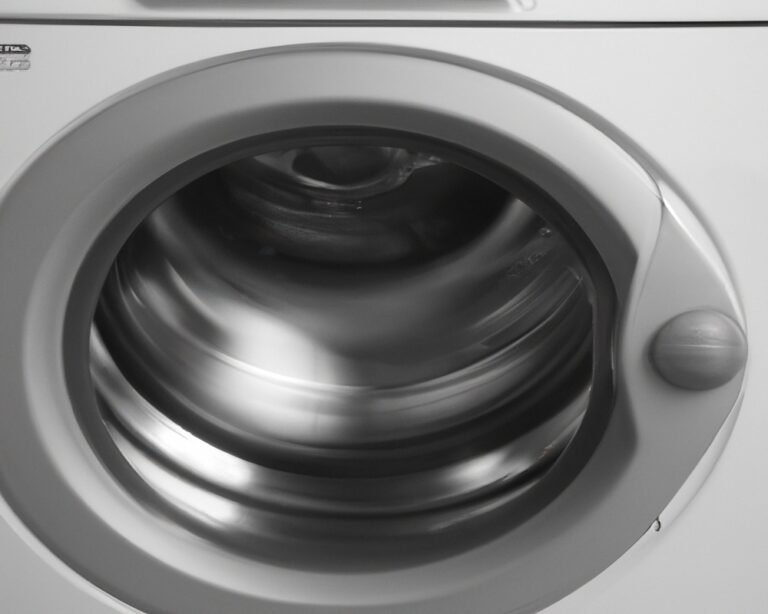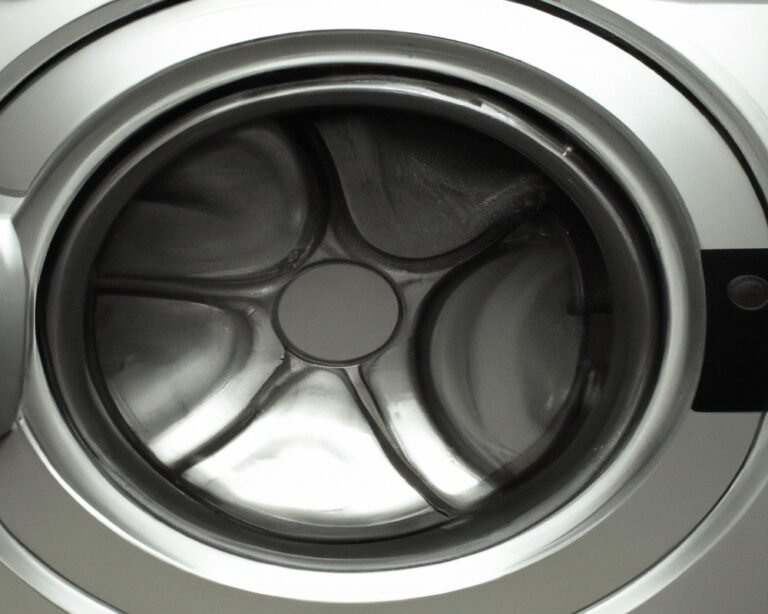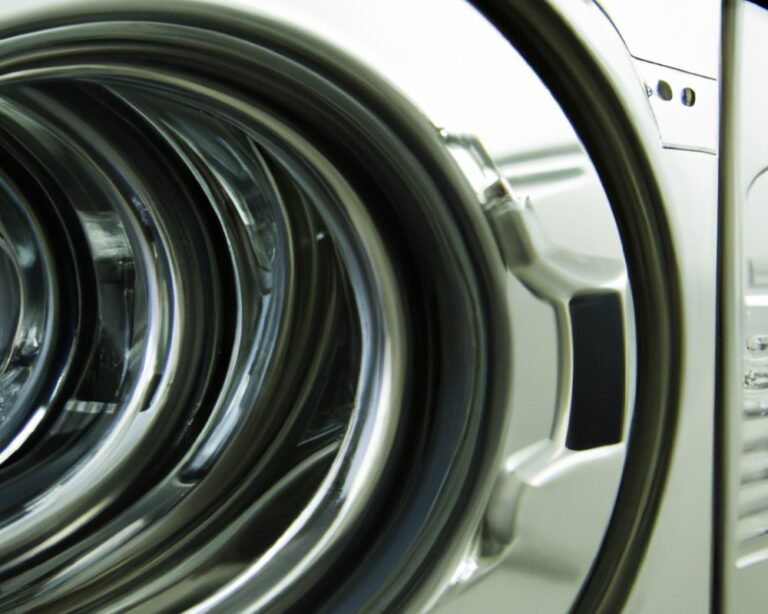Noise Levels Dryer: Find the Quietest Option for Peaceful Laundry
Key Takeaways:
- Excessive noise from dryers can be harmful to your hearing.
- Noise levels of dryers can vary widely depending on the model and manufacturer.
- Quieter dryers can help create a more peaceful and comfortable home environment.
- Regular maintenance and cleaning can help reduce noise levels in dryers.
Have you ever been annoyed by the loud rumbling of your dryer?
Wondering if there’s a way to reduce those noise levels?
Well, you’ve come to the right place! In this article, we’ll dive into the dryer features fascinating world of noise levels in dryers or Noise Levels Dryer.
From understanding why noise levels matter to exploring the factors that affect them, we’ll cover it all.
But that’s not all – we’ll also provide you with some actionable tips to reduce the noise levels in your dryer and answer some frequently asked questions.
So, let’s silence those noisy dryers and make laundry time a little more peaceful!
| Noise Level | Description |
| Low | Quiet or barely audible |
| Medium | Audible but not significantly disruptive |
| High | Loud and potentially disruptive |
| Very High | Extremely loud and highly disruptive |
Understanding Noise Levels in Dryers
Understanding Noise Levels in Dryers: Learn about why noise levels matter, how they are measured, and what common noise levels you can expect in dryers.
Why Noise Levels in Dryers Matter
Why Noise Levels in Dryers Matter The noise level of a dryer is an important consideration when purchasing a new appliance.
Here’s why it matters:
- Peace and Quiet: A quieter dryer means less disturbance in your home. You can relax, watch TV, or have a conversation without being interrupted by a loud, rumbling noise.
- Sleep Friendly: If you have a dryer close to your bedroom, a noisy one can disrupt your sleep. Opting for a quiet model ensures a peaceful night’s rest.
- Neighborhood Consideration: Excessively loud dryers can disturb your neighbors, especially if you live in an apartment or closely packed housing. A quieter dryer helps maintain a harmonious living environment.
- Home Safety: Unusually loud noises can indicate a problem with your dryer, such as loose parts or excessive vibrations. Monitoring noise levels can alert you to potential maintenance or safety issues.
By choosing a dryer with lower noise levels, you can create a more peaceful and pleasant environment for yourself and those around you.
So, consider noise levels when shopping for a new dryer, and enjoy the benefits of a quieter appliance.
How Noise Levels are Measured in Dryers
To measure noise levels in dryers, manufacturers use a sound level meter. This device measures the decibel (dB) level of the sound produced by the dryer during operation.
The meter is placed at a specific distance from the dryer and records the average noise level over a set period of time.
The resulting dB measurement provides a standard way to compare noise levels between different dryer models. It’s important to note that lower dB ratings indicate quieter dryers. Which is different from Wi-Fi connectivity dryers metric.
Be sure to check the noise level specifications when selecting a dryer to ensure it meets your desired noise level requirements.
Common Noise Levels in Dryers
Common Noise Levels in Dryers can vary depending on the model and brand.
However, there are a few general ranges you can expect.
In most cases, a dryer will produce noise levels between 55 to 70 decibels (dB).
To put that in perspective, a conversation at home typically ranges around 50 to 60 dB.
Some newer models may have quieter operation, falling in the range of 40 to 55 dB.
It’s worth noting that noises like thumps and rattles may indicate a problem, so it’s important to address any unusual sounds promptly.
Factors Affecting Noise Levels in Dryers
The noise levels in dryers can be affected by various factors, such as the type of dryer, size and capacity, motor and fan quality, drum material and design, and installation and ventilation.
Type of Dryer
There are two main types of dryers: vented and ventless.
- Vented Dryers: These dryers use a vent to expel hot air and moisture from the drum. They require an external venting system, which usually leads to the outside of the building. Vented dryers are common in most homes and offer faster drying times.
- Ventless Dryers: These dryers do not require a venting system and are a great option for apartments or homes without proper venting infrastructure. There are two types of ventless dryers: condensation dryers and heat pump dryers.
- Condensation Dryers: Condensation dryers use a condensed system to remove moisture from the air in the drum.The condensed water is collected in a reservoir or drained directly.
- Heat Pump Dryers: Heat pump dryers use a heat pump to extract moisture from the air and reuse it, making them more energy-efficient.
They require a bit longer drying time but are gentle on fabrics and reduce energy consumption.
Each type of dryer has its pros and cons, so considering your specific needs and available infrastructure will help you determine the right one for you.
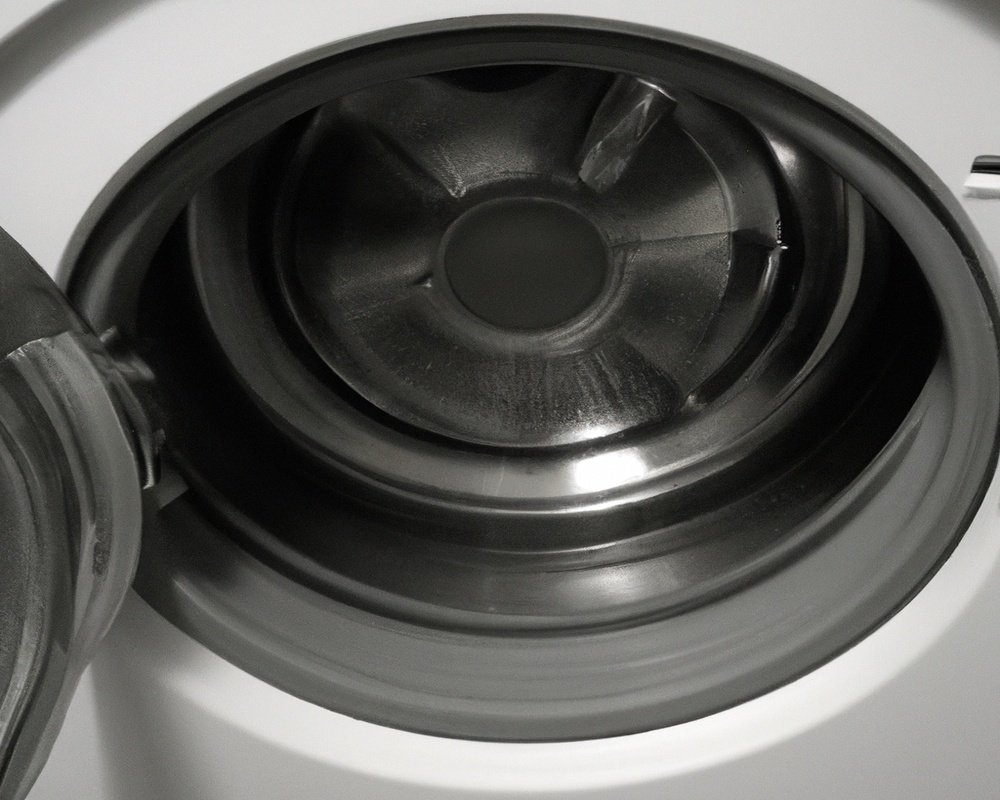
Dryer Size and Capacity
Dryer Size and Capacity greatly affect noise levels.
Larger dryers tend to generate more noise due to the higher amount of clothes they can accommodate.
Additionally, dryers with larger capacities often have more powerful motors, which can also contribute to increased noise levels.
On the other hand, smaller dryers are generally quieter since they have less capacity and less powerful motors.
Therefore, if reducing noise is a priority, consider choosing a dryer with a smaller size and capacity.
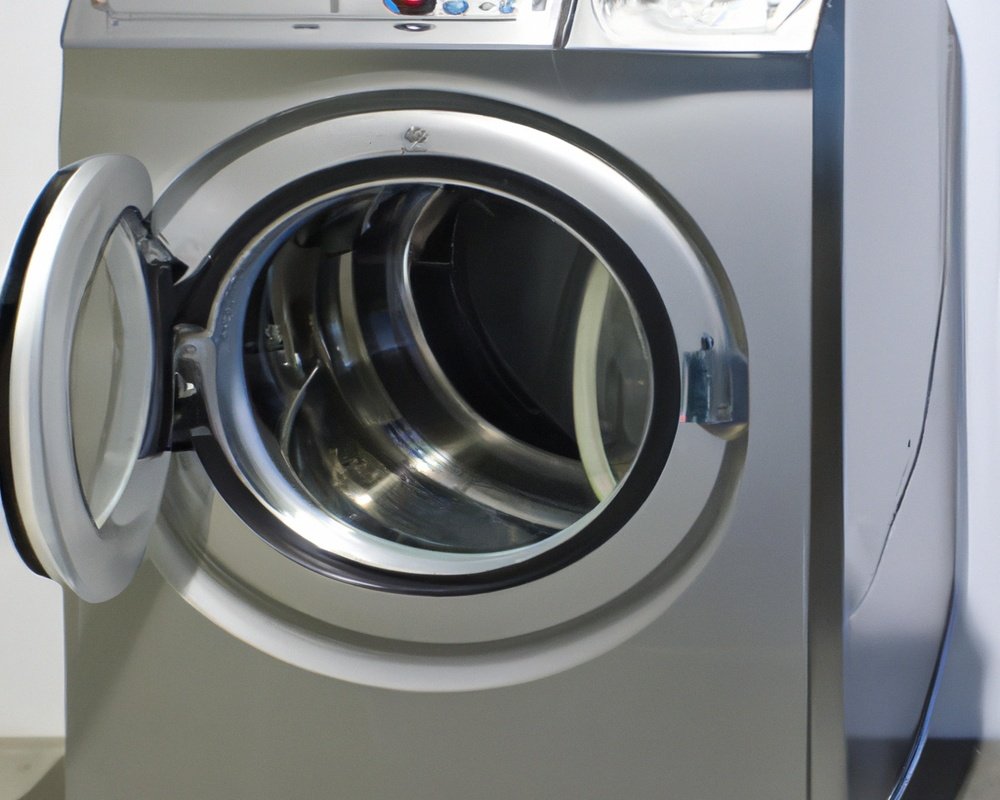
Motor and Fan Quality
Motor and fan quality are two important factors that can significantly affect the noise levels in dryers. The motor is responsible for powering the drum and other components in the dryer.
A high-quality motor will run smoothly and efficiently, resulting in less vibration and noise.
On the other hand, a poor-quality motor may produce excessive noise and contribute to a noisy drying process. Similarly, the fan is responsible for circulating the air inside the dryer.
A well-designed fan with balanced blades and efficient airflow can help reduce noise.
Conversely, a fan with imbalanced blades or poor airflow can create loud and disturbing noises during operation. To minimize noise levels in dryers, it is important to choose dryers with high-quality motors and fans.
Look for dryers from reputable brands known for their reliable motors and fans.
Reading customer reviews can also provide insights into the noise levels produced by different dryer models.

Drum Material and Design
The drum material and design play a significant role in the noise levels of dryers.
- Drum Material: Different materials have different acoustic properties. For example, steel drums are generally noisier compared to those made of plastic or porcelain-coated steel.
- Drum Design: The design of the drum can also impact noise levels. A drum with a smooth interior surface and balanced weight distribution tends to produce less noise during operation.
Therefore, when choosing a dryer, considering the drum material and design can help you find a quieter option.
Installation and Ventilation
Installation and ventilation play a crucial role in reducing noise levels in dryers.
Proper installation ensures that the dryer is securely in place, reducing vibrations that can contribute to noise.
Ventilation is important for proper airflow, preventing overheating and reducing noise caused by a strained motor.
To optimize installation, ensure the dryer is level, use vibration pads, and secure loose parts.
For ventilation, clean the vent regularly, ensure proper ductwork, and check for any obstructions.
These steps will help minimize noise and ensure smooth operation.
Tips to Reduce Noise Levels in Dryers
To reduce noise levels in dryers, try regular maintenance and cleaning.
Proper installation and venting can also help.
Regular Maintenance and Cleaning
Regular maintenance and cleaning are essential for keeping your dryer running smoothly and reducing noise levels.
Here are some tips:
- Clean the lint trap after each use to prevent lint buildup, which can cause noisy vibrations.
- Vacuum around the dryer and vent regularly to remove dust and debris that may contribute to noise.
- Check and clean the dryer vent hose to ensure proper airflow and prevent obstructions.
- Inspect and tighten any loose screws or bolts that may be causing rattling sounds.
- Lubricate the dryer drum rollers and motor bearings as recommended by the manufacturer.
- Regularly clean the inside of the dryer drum to remove any residue or buildup that could create noise.
Use Anti-Vibration Pads or Mats
If you want to reduce noise levels in your dryer, one effective solution is to use anti-vibration pads or mats. These products are designed to absorb vibrations and reduce the amount of noise produced by the machine.
You can simply place the pads or mats under the legs of your dryer to help dampen vibrations and minimize noise.
This is a practical and cost-effective way to create a quieter laundry experience in your home. Give it a try and see the difference it can make!
Insulate the Dryer Area
Insulating the dryer area can significantly reduce noise levels and prevent sound from spreading throughout your home. Here are a few effective methods to insulate your dryer area:
- Install soundproofing materials: Use acoustic panels or foam insulation to absorb and block sound waves.
- Seal air gaps: Check for any openings or gaps around the dryer and seal them with weatherstripping or caulk to prevent sound leakage.
- Use vibration pads: Place rubber or foam vibration pads under the dryer to reduce vibrations and minimize noise.
- Consider a noise-reducing mat: Place a noise-reducing mat beneath the dryer to further absorb sound and vibrations.
- Create a barrier: If possible, build a small enclosure around the dryer area with soundproof materials like drywall or insulation board.
By implementing these methods, you can create a quieter environment when operating your dryer. Remember, proper insulation is key to reducing noise levels and improving overall comfort in your home.
Consider Upgrading to a Quieter Model
Consider upgrading to a quieter model for your dryer. This can significantly reduce noise levels in your laundry room.
Look for models that have noise reduction features, such as sound insulation or anti-vibration technology.
Additionally, opt for dryers with a lower decibel rating, as these are designed to operate more quietly. Upgrading to a quieter model can greatly improve your laundry experience and create a more peaceful environment in your home.
Frequently Asked Questions About Noise Levels in Dryers
How loud is a typical dryer?
A typical dryer produces noise levels ranging from 60 to 80 decibels (dB) during operation.
To put that into context, it’s about as loud as a normal conversation or background music.
The noise is mainly caused by the motor, fan, and the movement of the clothes inside.
Some dryers may have noise reduction features, but in general, they can still be noticeable.
Consider placing your dryer away from living areas or using it during quieter times to minimize disturbances.
Are there any regulations or standards for noise levels in dryers?
There are regulations and standards for noise levels in dryers. The International Electrotechnical Commission (IEC) has set specific limits for the noise emitted by household appliances, including dryers.
These limits ensure that dryers do not exceed a certain decibel level during operation.
It is important for manufacturers to comply with these regulations to ensure that the dryers they produce meet the required noise level standards. This helps to protect consumers from excessive noise and ensures a quieter and more comfortable environment in the laundry room.
Can I reduce the noise level of my existing dryer?
Yes, you can reduce the noise level of your existing dryer.
Here are some tips:
- Check for any loose parts: Tighten any loose screws, knobs, or components that may be causing vibrations and noise.
- Level the dryer: Ensure that your dryer is properly leveled on the floor to minimize any unnecessary vibrations.
- Clean out lint: Removing built-up lint from the dryer’s vent and drum can help improve airflow and reduce noise.
- Lubricate moving parts: Apply a few drops of lubricant, such as WD-40, to the moving parts of your dryer, like the rollers and motor, to reduce friction and noise.
- Use rubber pads: Place rubber pads or vibration-dampening pads under the legs of your dryer to help absorb vibrations and reduce noise transmission.
- Insulate the surrounding area: Consider insulating the walls, floors, or cabinets near your dryer to help reduce noise reverberations.
- Limit load size: Overloading the dryer can cause it to become unbalanced and create excessive noise. Reduce the load size to avoid this issue.
Are gas dryers generally quieter than electric dryers?
Gas dryers are generally quieter than electric dryers. This is because gas dryers use combustion to heat the air, resulting in a quieter overall operation.
Electric dryers, on the other hand, rely on heating elements, which can produce more noise.
However, the noise levels of dryers can vary depending on the specific model and brand. It’s always a good idea to check the noise ratings provided by the manufacturer before making a purchase.
What are the quietest dryers available on the market?
The quietest dryers available on the market are designed to minimize noise while still providing efficient drying performance. These dryers feature advanced noise reduction technology, such as enhanced insulation and vibration control systems.
Additionally, they may have specially designed drums and motors that operate quietly.
Some models even have specialized modes for reducing noise during nighttime use. When shopping for a quiet dryer, look for options from reliable brands known for their quiet operation.
Final Verdict
Noise levels in dryers can have a significant impact on our daily lives.
Understanding how noise levels are measured in dryers and the factors that affect them is crucial when considering purchasing a new dryer or looking to reduce noise in an existing one.
Regular maintenance, proper installation, and the use of anti-vibration pads or mats are practical steps to reduce noise levels.
Upgrading to a quieter model may also be an option.
By taking these steps, you can create a quieter and more peaceful laundry experience.



